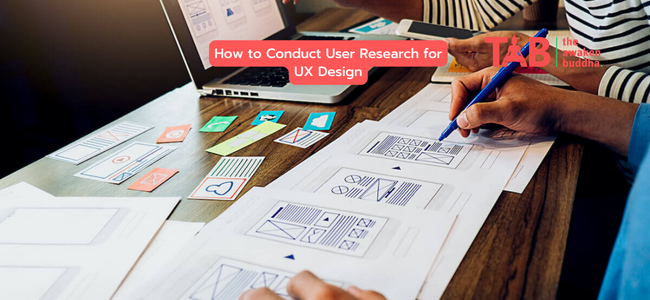User analysis forms a crucial foundation of UX design. The process of conducting user research enables UX designers to gain insights into the requirements, behaviors, and challenges their users face. Through thorough user research, designers can develop products tailored to address user needs, ultimately leading to an enhanced user experience. This article will delve into user research methodologies for effective UX design.
What is User Research?
User research entails comprehending user behaviors, identifying their needs, and pinpointing areas of concern. This process encompasses collecting user data through diverse methodologies, including surveys, interviews, and usability tests. User research equips designers with valuable insights from the user’s viewpoint, empowering them to make informed decisions.
Why is User Research Important for UX Design?
User research is crucial for UX design because it helps designers understand users’ needs, behaviors, and pain points. By understanding the user’s perspective, designers can create products that meet their users’ needs, resulting in a better user experience. Conducting user research also helps designers avoid assumptions about their users and create products that are usable, desirable, and valuable.
Steps for Conducting User Research
Step 1: Define the Research Questions
Before commencing user research, it is imperative to formulate precise research questions. These questions should exhibit specificity and revolve around gaining insights into the user’s requirements, behaviors, and areas of concern. These well-crafted questions are the compass for the research process, providing direction and aiding designers in making informed decisions.
Step 2: Select the Research Methods

Once the research questions are clearly defined, the subsequent stage involves selecting appropriate research methods. These chosen methods should be in harmony with the research questions and possess the capability to yield valuable insights into the user’s point of view. Commonly utilized research methods encompass surveys, interviews, and usability tests.
Step 3: Recruit Participants
Following the selection of research methods, the subsequent phase involves participant recruitment. It is vital to enlist participants who align with the target audience of the product being designed. Recruitment can be accomplished through various channels, including social media, email lists, or paid services.
Step 4: Conduct the Research
Following the recruitment of participants, the subsequent phase entails the actual execution of the research. The research process should follow a structured and systematic approach to ensure consistency and accuracy. Conducting the research impartial and unbiased to avoid any potential influence on the participants’ responses is crucial.
Step 5: Analyze the Data
Upon gathering the data, the subsequent step involves its analysis. The data analysis should identify patterns, themes, and valuable insights. Guided by the research questions, this analysis provides a deeper understanding of the user’s viewpoint.
Step 6: Communicate the Findings
The ultimate stage involves conveying the research findings. These findings should be communicated clearly and succinctly to stakeholders. Visual aids, such as archives and graphs, can be employed to enhance the comprehensibility of the findings.
Best Practices for Conducting User Research
1. Involve Users Earlier in the Design Process
Engaging users at the outset of the design process enables designers to craft products that align with user needs. Through early user involvement, designers can collect valuable feedback and make well-informed decisions rooted in the user’s viewpoint.
2. Use a Variety of Research Methods
Leveraging various research methods empowers designers to gather diverse perspectives regarding user needs, behaviors, and challenges. This multifaceted research approach enables designers to construct a more holistic and comprehensive understanding of the user’s viewpoint.
3. Focus on the User’s Needs, Not Wants

Prioritizing the user’s needs over their wants is of paramount importance. Wants frequently pertain to surface-level desires that may not harmonize with the user’s requirements. Designers can forge valuable, functional, and appealing products by centering their efforts on addressing the user’s core needs.
4. Be Open-Minded
Maintaining an open-minded approach during user research is crucial. This process has the potential to question preconceived assumptions and challenge existing beliefs about the product, which may, at times, be uncomfortable. Nevertheless, this open-mindedness catalyzes designers to fashion products that genuinely cater to users’ needs.
5. Test Early and Often
Frequent early testing proves instrumental in enabling designers to detect issues early in the design process. This iterative early and regular testing process allows designers to refine their designs and ultimately craft a superior user experience.
6. Use a Collaborative Approach
User research should embrace a collaborative approach involving both stakeholders and team members. This collaborative engagement fosters the development of a shared comprehension of the user’s viewpoint and contributes to a more all-encompassing grasp of the user’s requirements.
Conclusion
User research stands as a fundamental component of UX design. The process of conducting user research empowers designers to fashion products that align with user needs, ultimately enhancing the user experience. By adhering to the steps defined in this article and employing best practices for user research, designers can craft products that are not only valuable and functional but also appealing to users.
FAQs
1. What are the benefits of user research for UX design? Design?
User research helps designers create products that meet the needs of their users, ensuring a better user experience. User research also helps designers avoid assumptions about their users and create usable, desirable, and valuable products.
2. What are some standard user research methods?
Some standard user research methods include surveys, interviews, and usability tests.
3. What are some standard user research methods?
Involving users early in the design process helps designers gather feedback and make informed decisions based on the user’s perspective.
4. What should designers focus on when conducting user research?
Designers should focus on the user’s needs, not wants. Designers can create valuable, usable, and desirable products by focusing on the user’s needs.
5. How can designers ensure that user research is aimed in a neutral and unbiased manner?
Designers can ensure that user research is conducted in a neutral and unbiased manner by avoiding influencing the participants’ responses and conducting the research in a structured and systematic way.










